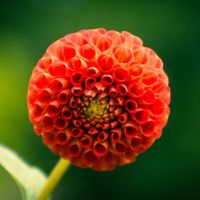False Indigo Growing Tips: Growing And Caring For Baptisia Plants


If you're looking for a striking perennial that needs minimum care to produce maximum results, take a good look at Baptisia plants. Also known as false indigo, the flowers were once used by Native Americans and early European settlers as a dye before true indigo became available.
False Indigo Flowers
Members of the Fabaceae or pea family, false indigo flowers' distinctive pea-like blossoms also come in white (Baptisia alba) and yellow (Baptisia tinctoria) as well as the more widely known blue (Baptisia australis).
There are also several hybrid cultivars on the market today. Native to the prairies of southern North America, Baptisia plants grow well in almost any well-drained soil in USDA planting zones 5-9. Leaves are trifoliate (three leaflets) and range in color from dark blue-green to light yellow-green and can become so dense as to give the plant a shrub-like appearance.
Fully mature plants can grow two and a half to three (0.5 to 1 m.) feet tall and produce racemes or flower spikes adding another 12 to 24 inches (30.5-61 cm.) to their height.
Each of these racemes is covered with flowers and will bloom for about six weeks in spring or early summer. A fully mature plant can produce a hundred of these glorious spikes.
False Indigo Growing Tips and Care
Like many prairie plants, Baptisia takes some time to establish its deep root system before taking off, so the first of false indigos growing tips would be to have patience. It can take up to three years for your seeds or seedlings to produce flowers.
The second of our false indigo growing tips would be to choose your site carefully. Once planted, Baptisia plants don't like to be moved. Their roots can grow up to 12 feet (3.5 meters) deep and a single clump can expand to 3 or 4 feet (1 m.) wide.
Sign up for the Gardening Know How newsletter today and receive a free copy of our e-book "How to Grow Delicious Tomatoes".
When deciding how to plant baptisia for the best effect, remember that some garden plantings of these hardy perennials have been known to last for decades. Baptisia plants need plenty of sun and once established, are extremely drought tolerant.
No pruning is necessary, though some gardeners prefer to remove the dark seed pods as part of their Baptisia plant care regimen. Others like the look of the dark pods and leave them as contrast in the garden. Beyond the first few years, Baptisia plant care requires very little from the gardener.
They like a yearly dose of general garden fertilizer and are bothered by very few pests or diseases. For organic gardeners, these plants are gems. Alkaloids produced in the species are toxic to many insects, which leads us to the third of our false indigo growing tips and concerns the occasional caterpillar found crawling along the leaves of this plant.
Care should be taken to leave them undisturbed. These prairie darlings are host plants for several species of butterfly.
How to Plant Baptisia
When offering advice on how to plant Baptisia, most authorities will recommend seed and this is, in fact, the most common method of propagation, but what they don't mention is that fresh seed is best and most reliable for germination.
If you know someone who already grows false indigo flowers in their garden, don't hesitate to ask for a few seed pods just as the pods begin to split. Check the seeds for tiny holes - there's a tiny weevil that attacks the seeds but not the plant - and discard any that are damaged. These seeds can be sown directly, planting them a quarter-inch (0.5 cm.) deep, and will usually germinate in about two weeks.
If fresh seed is unavailable, how to plant Baptisia seed becomes a little more complicated. Hardened seeds should be chilled in the refrigerator for six to 12 weeks. The stratified (chilled) seeds must then be scarified, which means the seed coat must be worn down with sandpaper or nicked with a knife tip.
The seeds then need to be soaked in water for 24 hours and planted indoors. Seedlings can be moved to the garden after all danger of frost has passed. A much less involved method is to propagate by stem cuttings. Take your cuttings in the early spring before new growth becomes too woody.
Cuttings should be long enough to ensure that at least one set of leaf buds will be below the soil surface. Dip the cutting in rooting hormone and plant in a loose growing medium. Keep the humidity high with a glass jar or plastic tent and the cuttings should root in about eight weeks.
The third method for how to plant Baptisia is also the least recommended and least successful. Propagate by plant division only if you have no other alternative. As stated before, these plants don't like to be disturbed once they are established.
If you must, divide in spring just as new growth appears. Dig deep and take as much root as possible. You'll need a saw to cut the plant apart and plant the divisions as quickly as possible. If the roots dry out, they won't survive. Water well immediately after planting and keep your fingers crossed.
False indigo flowers can be a welcome addition to any garden, formal or informal. All it takes is a little time and patience and your Baptisia plants will reward you well for years and years to come.

Jackie Rhoades began writing for Gardening Know How in 2010.